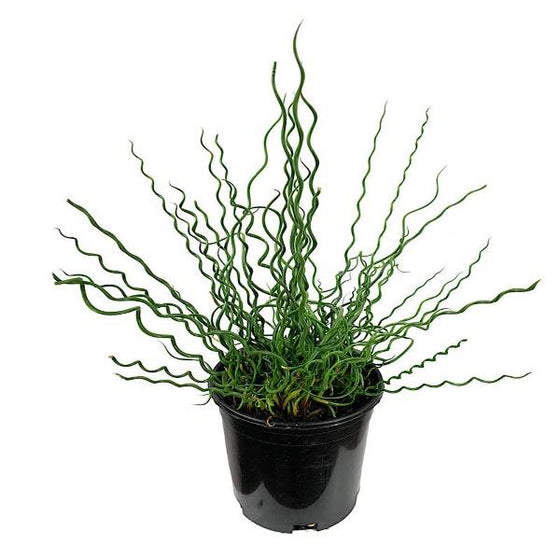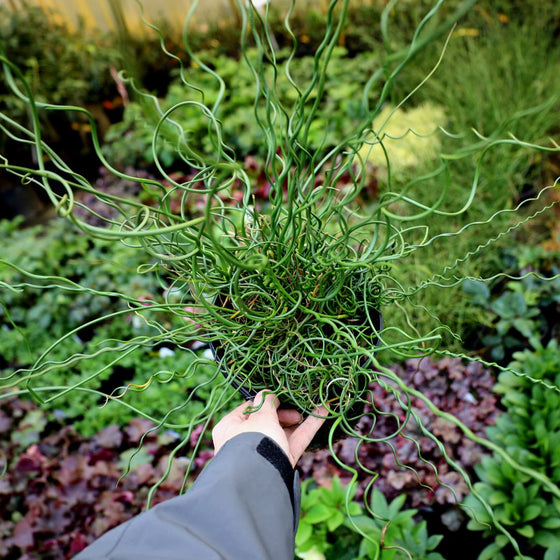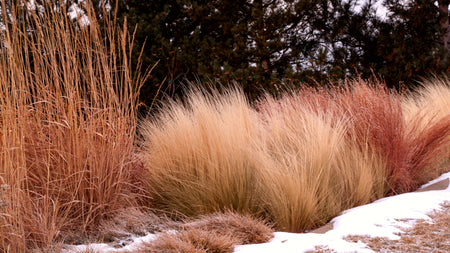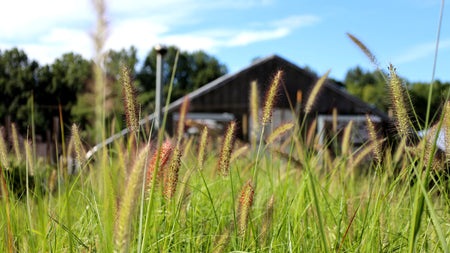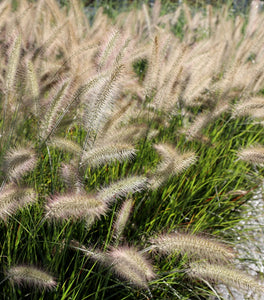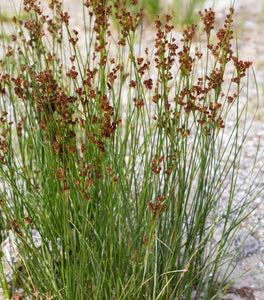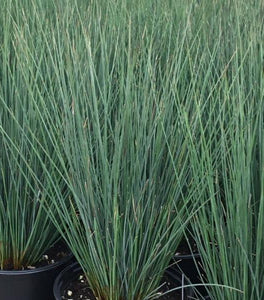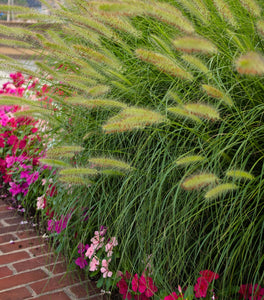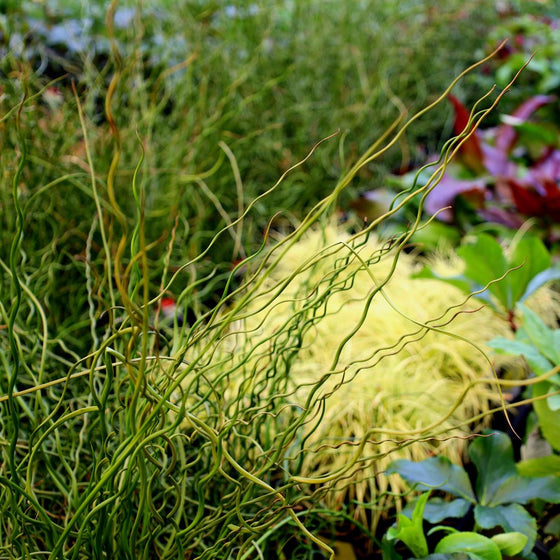
Images Depict Mature Plants
Juncus Big Twister For Sale Online
Juncus Big Twister (Juncus effusus 'Big Twister') is a unique ornamental grass (technically a Rush) that adds a dramatic twist to any landscape with its bold, curly, upright foliage. Known for its distinctive spiraling stems, this striking plant is perfect for adding texture and visual interest to gardens, containers, or water features. The vibrant green, corkscrew-like stems grow in dense clumps, reaching a mature height of 18-24 inches, with a spread of about 12-18 inches, making it an eye-catching focal point in any setting. Its whimsical, twisting growth habit makes Juncus Big Twister a fantastic conversation piece in both traditional and modern landscape designs.
Hardy in USDA Zones 5-9, Juncus Big Twister thrives in moist to wet soils, making it an excellent choice for rain gardens, boggy areas, or near ponds and streams. Once established, this versatile grass-like plant can also tolerate drier conditions, but it performs best in consistently moist environments with full sun to partial shade. Its adaptability to a range of conditions makes it a perfect addition to water-wise landscapes, container gardens, or mixed perennial plantings where unique form and texture are desired.
In addition to its ornamental appeal, Juncus Big Twister is low-maintenance and deer-resistant, making it an ideal option for gardens in deer-prone areas. Its dense growth habit also helps with erosion control, particularly in areas with poor drainage or where water tends to pool. Whether planted in containers, used as a water garden accent, or incorporated into landscape beds, Juncus Big Twister adds year-round texture and intrigue with its bold, curly stems and easy-care nature.
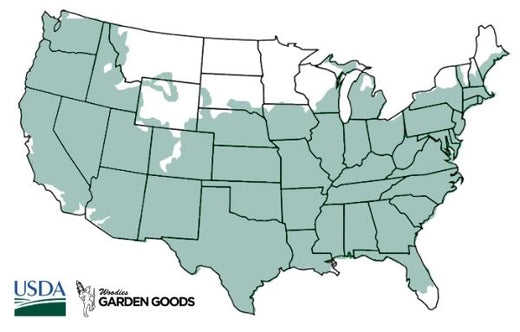
| Hardiness Zone: | 5-9 |
|---|---|
| Mature Height: | 1 to 2 feet |
| Mature Width: | 1.5 to 2 Feet |
| Sunlight: | Full Sun to partial shade, bright indirect light to filtered indirect light |
| Water Requirements: | Likes to stay evenly moist |
| Flower: | Inconspicuous |
| Growth Rate: | Medium to Fast |
| Uses: | Indoor an outdoor; container gardens; rock gardens; ornamental indoor plant; specimen |
How to Care for Juncus Big Twister
Before purchasing your Juncus Big Twister, read all of the recommended care instructions to ensure a successful transition to its new home.
How Do I Plant Juncus Big Twister Plants?
To plant Juncus Big Twister, begin by selecting a location with full sun to partial shade and moist to wet soil, as this ornamental grass thrives in consistently damp environments. Ideal planting spots include rain gardens, boggy areas, or near ponds and streams. Start by digging a hole twice the width of the root ball and deep enough so that the top of the root ball is level with the surrounding soil. Gently loosen the roots, place the plant in the hole, and backfill with soil. After planting, water thoroughly to help the roots establish, ensuring the soil remains moist. If planting Juncus Big Twister in containers, choose a pot with good drainage and fill it with a rich, well-draining potting mix. This plant can also tolerate drier conditions once established, but it performs best with regular watering, especially during dry periods. Spacing should be about 12-18 inches apart in landscape beds to allow room for its curly, upright growth habit. Adding a layer of mulch around the base of the plant helps retain moisture and prevent weeds from competing for nutrients. With proper planting and care, Juncus Big Twister will thrive, providing its signature bold, spiraling stems and low-maintenance appeal to your garden or water feature.
How do I Water Juncus Big Twister?
To water Juncus Big Twister, it’s essential to keep the soil consistently moist, as this ornamental grass thrives in wet environments. Ideal for rain gardens, boggy areas, or near ponds, Juncus Big Twister prefers to have access to water regularly. During the first growing season, water deeply to help establish strong roots, ensuring the soil remains wet but not waterlogged. If planted in containers, check the soil frequently, as pots tend to dry out faster, and provide enough water to keep the soil consistently moist. Once Juncus Big Twister is established, it becomes more tolerant of varying moisture levels but still performs best in wet to moist conditions. In garden beds or containers, water regularly during dry spells, ensuring the soil doesn't completely dry out. For plants located near water features, natural moisture may be sufficient, but supplemental watering during extremely dry periods can help maintain the plant’s lush, curly foliage. Regular watering ensures Juncus Big Twister maintains its vibrant, bold stems and continues to add texture and visual interest to your landscape or water garden.
How do I Fertilize Juncus Big Twister?
To fertilize Juncus Big Twister, apply a balanced, slow-release fertilizer in early spring to promote healthy growth and vibrant, curly stems. A fertilizer with a 10-10-10 formula works well, providing essential nutrients like nitrogen, phosphorus, and potassium. Sprinkle the fertilizer evenly around the base of the plant, being careful to avoid direct contact with the foliage, and water thoroughly afterward to help the nutrients reach the root zone. If you prefer an organic approach, compost or well-rotted manure can be added to enrich the soil and boost the plant’s health naturally. Once Juncus Big Twister is established, it typically doesn’t require heavy fertilization. In nutrient-rich soil, a light top-dressing of compost each spring may be sufficient to maintain healthy growth. Avoid over-fertilizing, as this can lead to overly lush growth at the expense of the plant’s structural integrity. For container plantings, you can fertilize with a liquid fertilizer every few months during the growing season to keep the plant looking vibrant. By following a simple fertilization routine, Juncus Big Twister will continue to thrive, providing its signature bold, spiraling foliage to enhance your garden or water feature.

How do I Prune my Juncus Big Twister?
Pruning Juncus Big Twister is relatively easy and helps maintain its unique, curly structure. The best time to prune is in late winter or early spring, just before new growth begins. Use sharp garden shears to trim away any dead, damaged, or brown stems at the base of the plant. This allows for healthy new growth and helps keep the plant looking fresh and vibrant. Removing dead foliage also improves airflow around the plant, reducing the risk of fungal issues and keeping the stems from becoming too dense. During the growing season, Juncus Big Twister typically requires minimal pruning. However, you can selectively trim any damaged or unsightly stems as needed to maintain its neat appearance. Avoid heavy pruning during active growth, as this may stunt its development. For container plantings, pruning helps control the size and keeps the plant from becoming overgrown. By pruning annually and removing any dead or damaged foliage, you’ll help Juncus Big Twister retain its bold, curly structure, making it a striking feature in your garden or water landscape.

